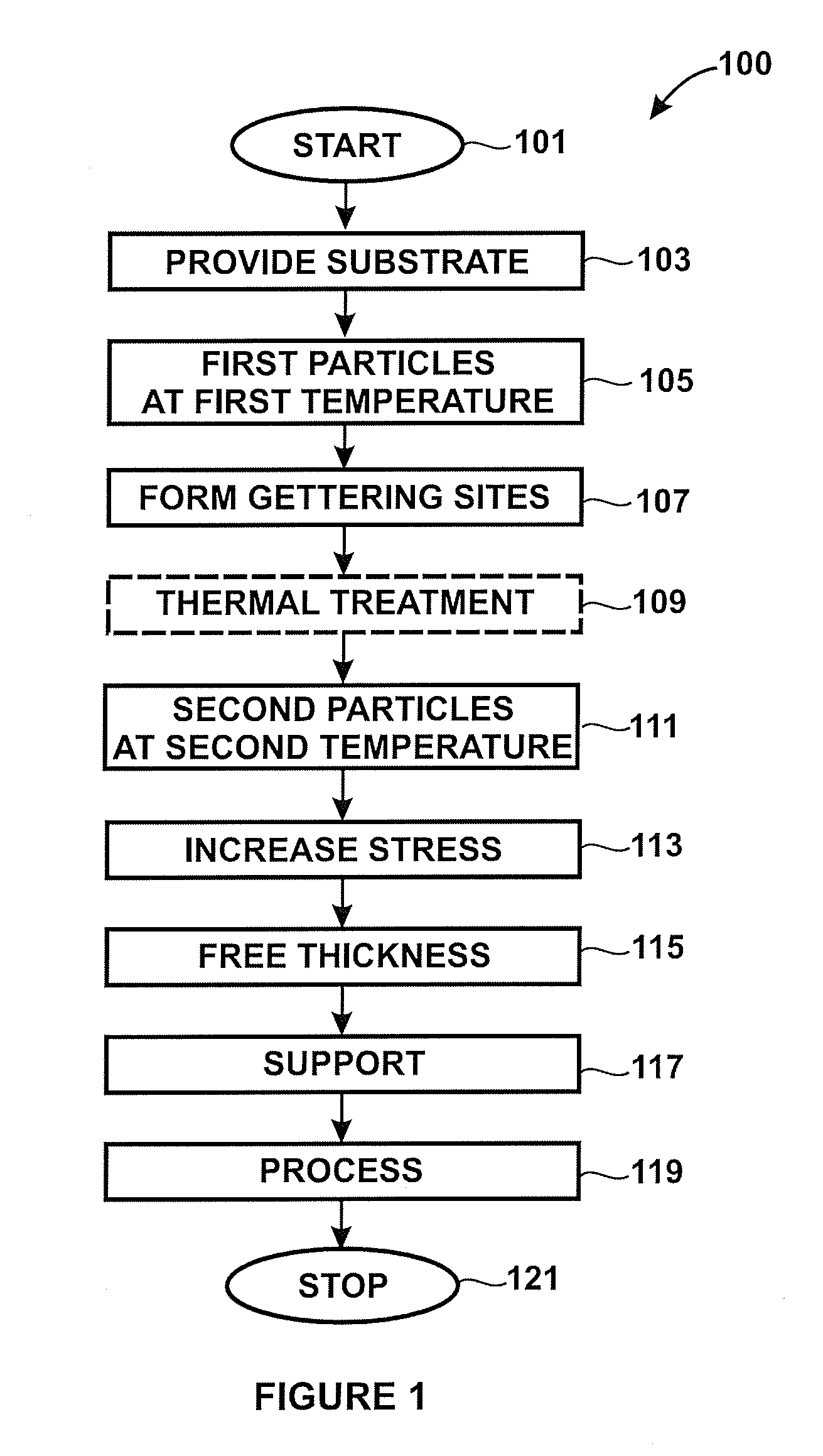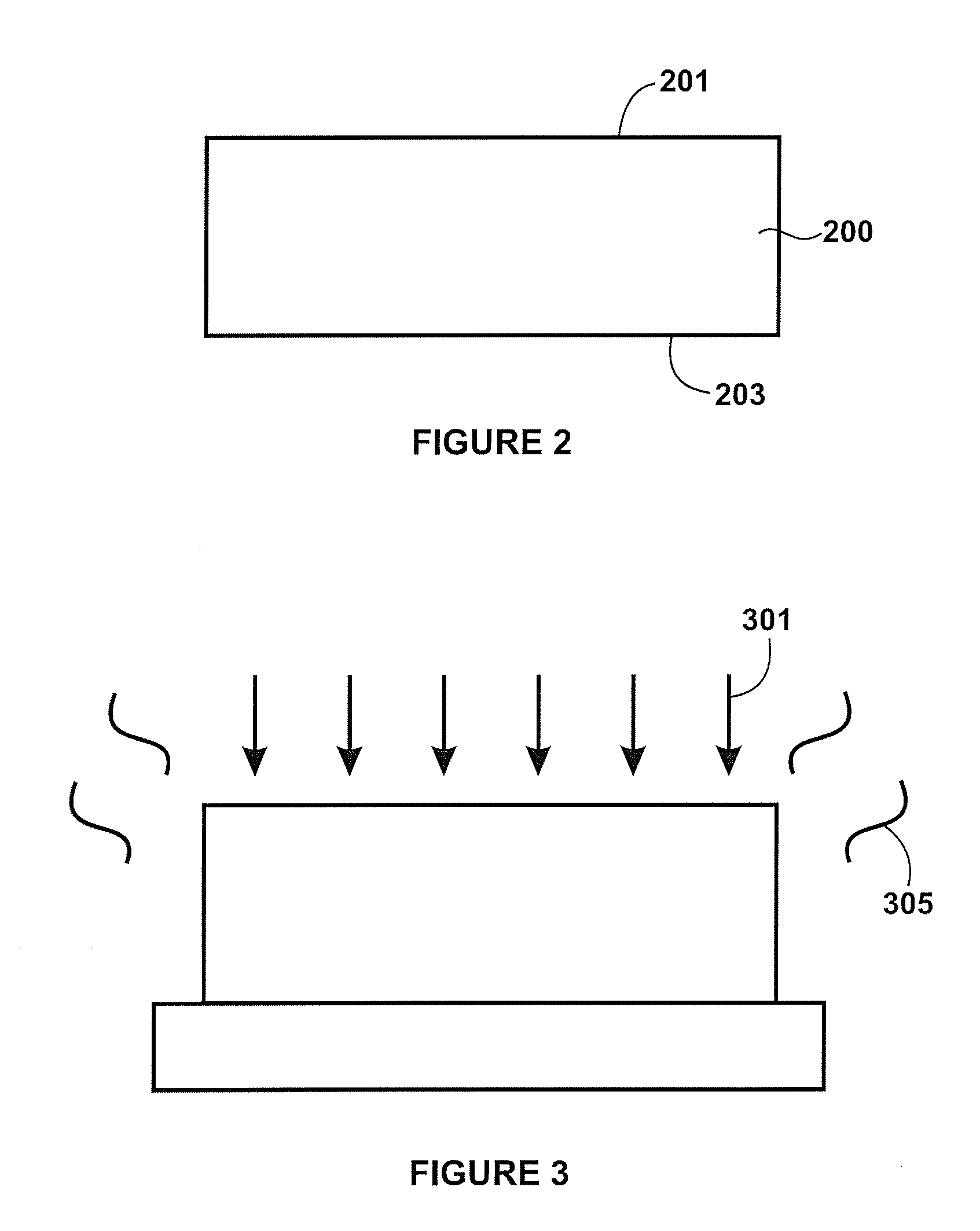Method and structure using selected implant angles using a linear accelerator process for manufacture of free standing films of materials
a technology of free standing films and accelerator processes, which is applied in the direction of semiconductor/solid-state device manufacturing, basic electric elements, electric apparatus, etc., can solve the problems of not possessing the optimum properties of highly effective solar cells, materials are often difficult to manufacture, and many limitations of solar cells, so as to increase the stress level of the cleave region
- Summary
- Abstract
- Description
- Claims
- Application Information
AI Technical Summary
Benefits of technology
Problems solved by technology
Method used
Image
Examples
examples
[0151]To prove the principles and operation of the present invention, we perform certain experiments. These experiments are merely examples, which should not unduly limit the scope of the claims herein. One of ordinary skill in the art would recognize many other variations, modifications, alternatives. Further details of these experiments can be found throughout the present specification and more particularly below.
[0152]As an example, silicon wafer samples were prepared having various orientations and impurities. In a specific embodiment, square shaped samples, which were orientation and p-type doped, were prepared. In an alternative embodiment, round shaped samples, which were orientation and n-type doped, were prepared. Depending upon the embodiment and experiments, we can use other variations, modifications, and alternatives. Additionally, the square and round shape lead to certain characteristics but should be used herein for labeling purposes and shall not unduly limit the s...
PUM
| Property | Measurement | Unit |
|---|---|---|
| angle | aaaaa | aaaaa |
| angle | aaaaa | aaaaa |
| angle | aaaaa | aaaaa |
Abstract
Description
Claims
Application Information
 Login to View More
Login to View More - R&D
- Intellectual Property
- Life Sciences
- Materials
- Tech Scout
- Unparalleled Data Quality
- Higher Quality Content
- 60% Fewer Hallucinations
Browse by: Latest US Patents, China's latest patents, Technical Efficacy Thesaurus, Application Domain, Technology Topic, Popular Technical Reports.
© 2025 PatSnap. All rights reserved.Legal|Privacy policy|Modern Slavery Act Transparency Statement|Sitemap|About US| Contact US: help@patsnap.com



